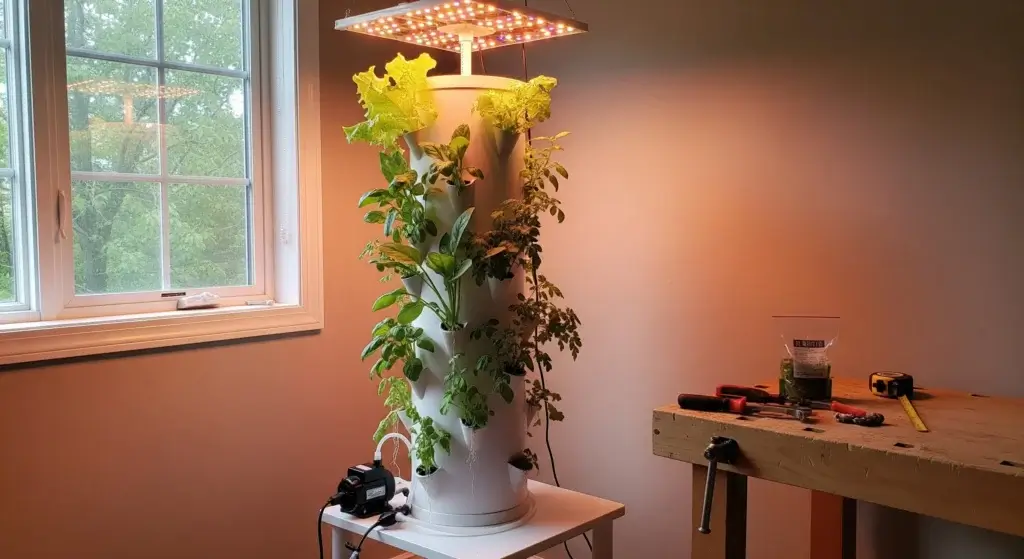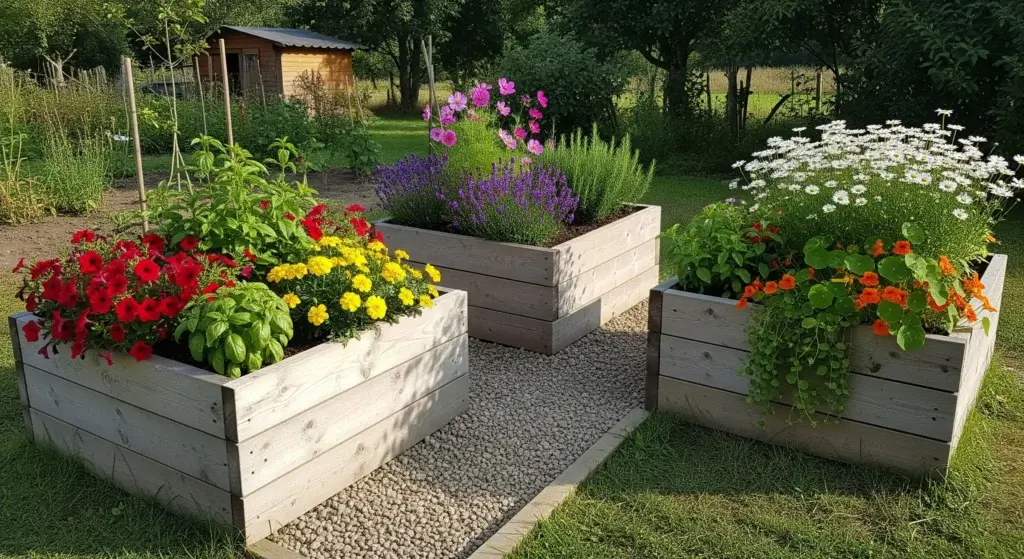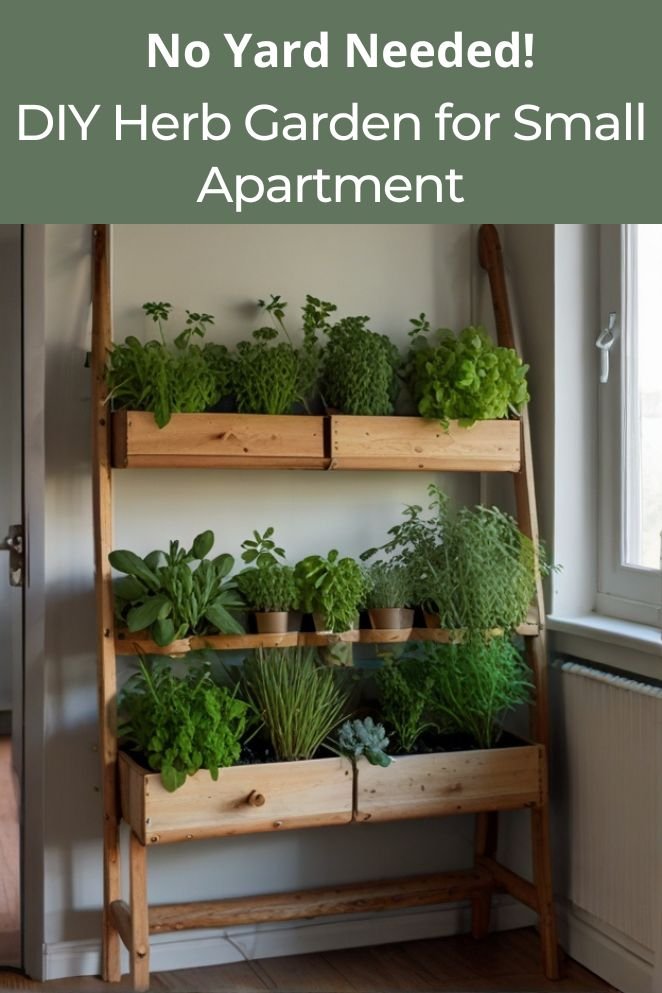
Growing your own herb garden in a small apartment can be a rewarding experience, providing fresh ingredients for cooking and a sense of accomplishment.
In this blog post, we’ll discuss planning your herb garden, building your garden step-by-step, caring for your herbs, and troubleshooting common problems.
Planning Your Herb Garden
Planning your herb garden requires thoughtful consideration of several key factors to ensure successful growth and cultivation.
Light
Light is like fuel for your herbs, providing the energy they need to grow and thrive through a process called photosynthesis.
For herbs that crave lots of sunlight, like basil and thyme, opt for a sunny window where they can bask in the sunshine.
If you have herbs that prefer indirect light, such as parsley and chives, choose a window with filtered light to keep them happy and healthy.
- Read also: From Trash to Table: DIY Container Ideas For Herbs
- Read also: Garden Up! Easy DIY Vertical Gardens in Small Spaces
Space
Limited space doesn’t have to mean limited herbs.
Get creative with your herb garden by utilizing various space-saving solutions.
Windowsills are perfect for small pots or trays of herbs, while tiered shelves can maximize vertical space.
Hanging planters or vertical gardens are excellent options for those with even less space, allowing you to grow herbs upwards instead of outwards.
Choosing herbs
When selecting herbs for your small-space garden, opt for varieties that are not only easy to grow but also pack a punch in flavor.
Basil, mint, parsley, chives, and thyme are all excellent choices for compact gardens.
These herbs are versatile in the kitchen and are sure to add freshness and flavor to your dishes.
Materials
To get your herb garden started, you’ll need a few essential items.
First, choose pots with drainage holes to ensure proper water drainage and prevent root rot.
Invest in a high-quality potting mix that’s well-draining and organic to provide your herbs with the nutrients they need.
Finally, decide whether you want to start from seeds or purchase seedlings from a nursery, depending on your preference and patience level.
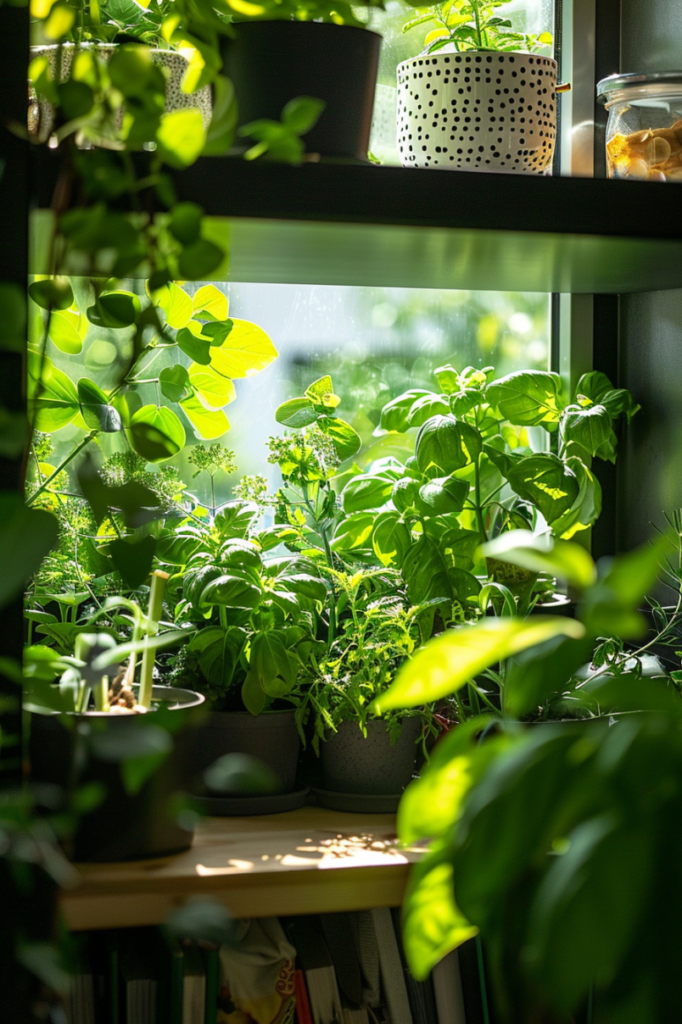
Building Your Herb Garden (Step-by-Step Guide)
Building your herb garden is an exciting step towards cultivating fresh flavors right in your own home.
Follow this step-by-step guide to create a thriving herb oasis:
Step 1: Selecting pots
Choose pots that suit the needs of your herbs and the available space in your home.
Opt for smaller pots for herbs like mint and chives, which have shallower root systems and can thrive in compact spaces.
For larger herbs such as basil and thyme, select larger pots that provide ample room for root growth.
Additionally, consider the material of the pots, opting for breathable materials like terracotta or ceramic to promote healthy airflow to the roots.
Step 2: Preparing the pots
Prioritize proper drainage to prevent waterlogging, which can lead to root rot and hinder herb growth.
Ensure that your pots have drainage holes at the bottom to allow excess water to escape.
To further improve drainage, add a layer of pebbles or a broken shard to the bottom of the pot before adding the potting mix.
This layer helps create space for water to drain away from the roots, promoting healthy root development.
Step 3: Filling with potting mix
Use a high-quality, well-draining potting mix to provide the necessary nutrients for your herbs to thrive.
Avoid using garden soil, as it may compact over time and impede drainage.
Fill the pots with potting mix, leaving enough space at the top to accommodate the seeds or seedlings and allow for watering.
Step 4: Planting seeds or seedlings
When planting seeds, follow the instructions on the seed packet regarding planting depth and spacing.
Plant the seeds at the recommended depth and gently water them to ensure adequate moisture for germination.
For transplanting seedlings, carefully select healthy specimens with robust stems and vibrant leaves.
Plant the seedlings at the appropriate depth, ensuring that the roots are covered with potting mix and spaced according to the herb’s growth requirements.
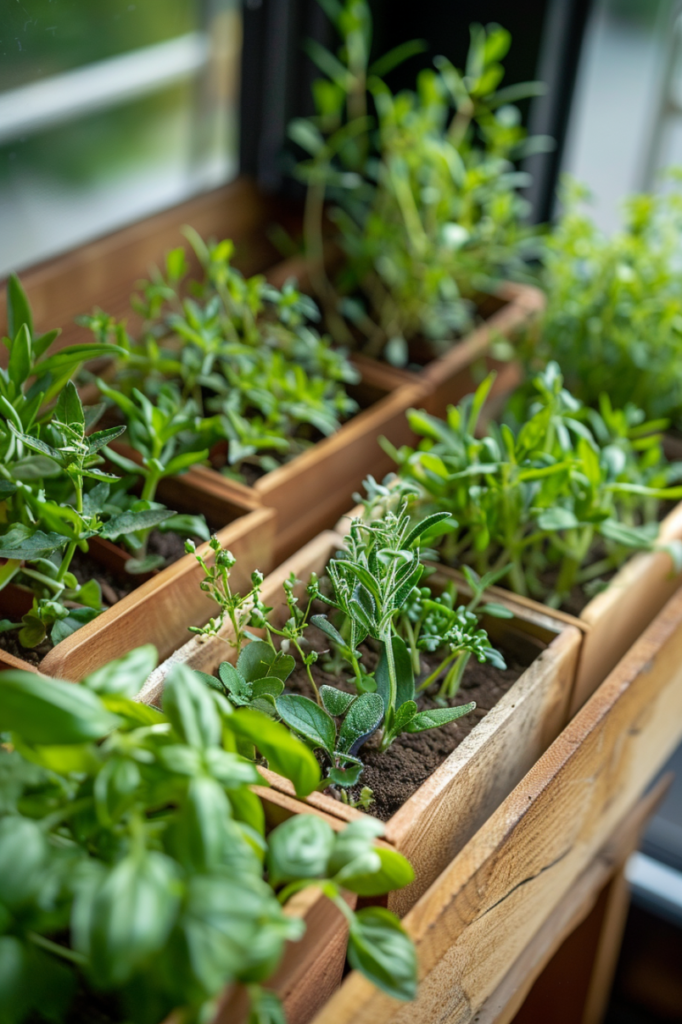
Caring for Your Herb Garden
Caring for your herb garden involves attention to detail and understanding the specific needs of your plants.
Here’s how to ensure your herbs thrive:
Watering
Proper watering is essential to prevent both overwatering and underwatering, which can harm your herbs.
Water your herbs when the top layer of soil feels dry to the touch, but avoid letting it become bone dry.
Overwatering can lead to root rot, while underwatering can cause wilting and stunted growth.
Aim to maintain consistent moisture levels in the soil without saturating it.
Light
Providing adequate light is crucial for the health and growth of your herbs.
Ensure your herbs receive the appropriate amount of light according to their specific requirements.
Place them in a sunny window where they can receive several hours of direct sunlight each day.
If your herbs require more light than your space allows, consider rotating your pots regularly to maximize sunlight exposure and promote even growth.
Feeding
While herbs generally don’t require frequent feeding, occasional fertilization can support their long-term growth and productivity.
Use a balanced fertilizer formulated specifically for herbs, and apply it according to the instructions on the packaging.
Avoid over-fertilizing, as this can lead to nutrient imbalances and damage to your plants. Instead, follow a regular feeding schedule to provide your herbs with the essential nutrients they need to thrive.
Harvesting
Harvesting your herbs properly ensures continued growth and a bountiful supply of fresh flavors for your culinary creations.
Wait until your herbs are at their peak flavor before harvesting, typically when they have matured but before they begin to flower.
Use sharp scissors or pinch off the leaves at the stem to avoid damaging the plant.
Harvesting encourages new growth and helps your herbs maintain their vitality throughout the growing season.
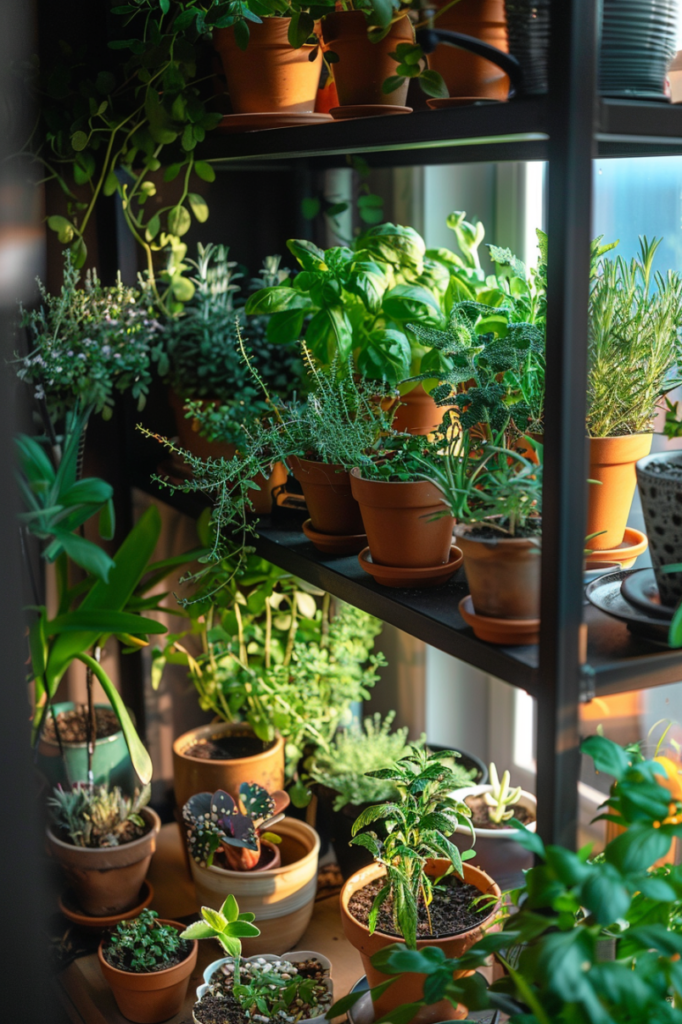
Troubleshooting Common Problems
When troubleshooting common problems in your herb garden, it’s important to identify the underlying causes and implement effective solutions.
Here’s how to address some common issues:
Yellowing leaves
Potential causes
Yellowing leaves can be a sign of overwatering, which leads to waterlogged soil and root rot.
Alternatively, it could indicate a lack of essential nutrients in the soil.
Solutions
Adjust your watering habits by allowing the soil to dry out slightly between waterings to prevent overwatering.
Consider using a balanced fertilizer to replenish essential nutrients and promote healthy leaf growth.
Ensure your herbs are receiving adequate sunlight, as insufficient light can also contribute to nutrient deficiencies and yellowing leaves.
Leggy growth
Issue
Leggy growth occurs when herbs don’t receive enough light, causing them to stretch out in search of sunlight.
Remedies
Reposition your pots to a sunnier location or closer to a window to provide the necessary light for your herbs.
If natural light is limited, consider using grow lights to supplement illumination and encourage compact, bushy growth.
Regularly rotate your pots to ensure even light exposure on all sides of the plant and prevent leggy growth.
Pests
Common pests
Indoor herb gardens may attract pests such as aphids, spider mites, and whiteflies, which can damage plant foliage and hinder growth.
Organic solutions
Combat pests using organic solutions like neem oil spray, which is effective at controlling common herb garden pests while being safe for plants and the environment.
Apply neem oil spray according to the manufacturer’s instructions, ensuring thorough coverage of both the tops and undersides of leaves.
Additionally, maintain good plant hygiene by regularly removing any debris or dead foliage, as pests often hide and reproduce in these areas.

- Read also: Grow Anywhere: DIY Container Ideas For Vegetables
- Read also: Tiny Greens: Step by Step Guide to DIY Microgreens Indoors
Conclusion
Growing your own DIY herb garden in a small apartment can be a fun and rewarding experience.
By following the steps outlined in this blog post, you’ll be able to cultivate fresh herbs for your cooking and enjoy the satisfaction of growing your own plants.


